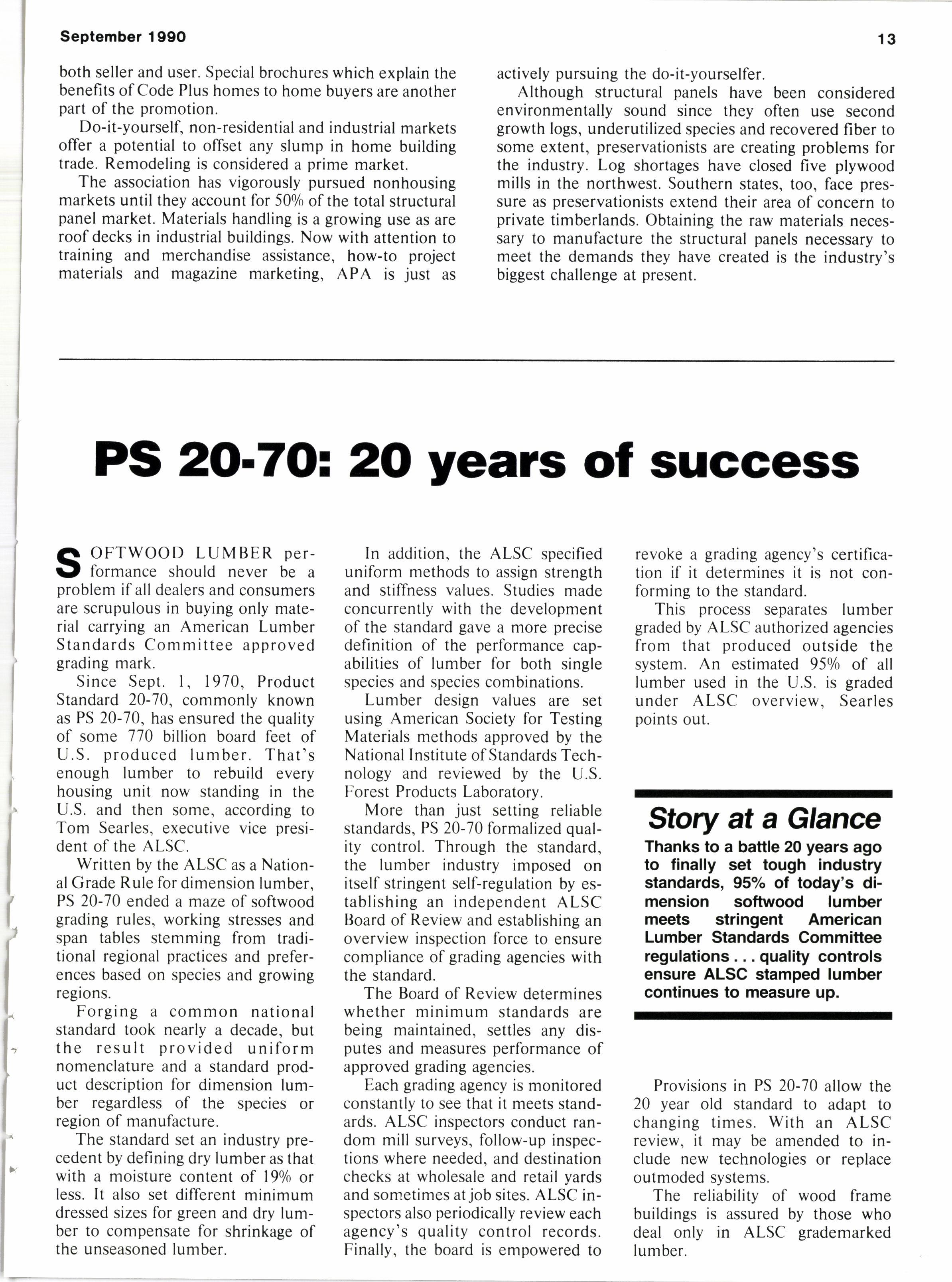
2 minute read
PS 2O-7O: 20 years of success
C OFTWOOD L.UMBER pertJ tormance should never be a problem if all dealers and consumers are scrupulous in buying only material carrying an American Lumber Standards Committee approved grading mark.
Since Sept. l, 1970, Product Standard 20-70, commonly known as PS 20-70, has ensured the quality of some 770 billion board feet of U.S. produced lumber. That's enough lumber to rebuild every housing unit now standing in the U.S. and then some, according to Tom Searles, executive vice president of the ALSC.
Written by the ALSC as a National Grade Rule for dimension lumber, PS 20-70 ended a maze of softwood grading rules, working stresses and span tables stemming from traditional regional practices and preferences based on species and growing regions.
Forging a common national standard took nearly a decade, but the result provided uniform nomenclature and a standard product description for dimension lumber regardless of the species or region of manufacture.
The standard set an industry precedent by defining dry lumber as that with a moisture content of l9olo or less. It also set different minimum dressed sizes for green and dry lumber to compensate for shrinkage of the unseasoned lumber.
In addition, the ALSC specified uniform methods to assign strength and stiffness values. Studies made concurrently with the development of the standard gave a more precise definition of the performance capabilities of lumber for both single species and species combinations.
Lumber design values are set using American Society for Testing Materials methods approved by the National Institute of Standards Technology and reviewed by the U.S. Forest Products Laboratory.
More than just setting reliable standards, PS 20-70 formalized quality control. Through the standard, the lumber industry imposed on itself stringent self-regulation by establishing an independent ALSC Board of Review and establishing an overview inspection force to ensure compliance of grading agencies with the standard.
The Board of Review determines whether minimum standards are being maintained, settles any disputes and measures performance of approved grading agencies.
Each grading agency is monitored constantly to see that it meets standards. ALSC inspectors conduct random mill surveys, follow-up inspections where needed, and destination checks at wholesale and retail yards and sometimes at job sites, ALSC inspectors also periodically review each agency's quality control records. Finally, the board is empowered to revoke a grading agency's certification if it determines it is not conforming to the standard.
This process separates lumber graded by ALSC authorized agencies from that produced outside the system. An estimated 95% of all lumber used in the U.S. is graded under ALSC overview. Searles points out.
Story at a Glance
Thanks to a battle 20 years ago to finally set tough industry standards, 95% of today's dimension softwood lumber meets stringent American Lumber Standards Committee regulations. quality controls ensure ALSC stamped lumber continues to measure up.
Provisions in PS 20-70 allow the 20 year old standard to adapt to changing times. With an ALSC review, it may be amended to include new technologies or replace outmoded systems.
The reliability of wood frame buildings is assured by those who deal only in ALSC grademarked lumber.










